Mythologies of the Nanticoke Tribes
Nanticoke, a confederacy of Algonquian-speaking North American Indians who lived along the eastern shores of what are now Maryland and southern Delaware; their name means “tidewater people.” They were related to the Delaware and the Conoy. Nanticoke subsistence depended largely on fishing and trapping, and their social organization probably included a head chief, as well as subordinate chiefs of the various tribes. They were at war with the Maryland colonists from 1642 to 1678; in 1698 reservations were set aside for them. Sometime after 1722 most of the Nanticoke began moving northward, some settling with the Iroquois in what is now western New York state; many emigrated westward about 1784 and were incorporated into the Delaware tribe in what have become Ohio and Indiana. Early 21st-century population estimates indicated approximately 2,500 individuals of Nanticoke descent.
Nanticoke Indian Tribe
People of the Tide Water
info@nanticokeindians.org
(302) 945-3400
The Nanticoke Tribe are a Native American Algonquian people, whose traditional homelands are in Chesapeake Bay and Delaware. Today they live in the Northeastern United States and Canada, especially Delaware; in Ontario; and in Oklahoma. The Nanticoke people consisted of several tribes: The NanticokeThe Nanticoke people may have originated in Labrador, Canada, and migrated through the Great Lakes region and the Ohio Valley to the east, along with the Shawnee and Lenape peoples. proper (the subject of this article), the Choptank, the Assateague, the Piscataway, and the Doeg. Members of the Conoy people joined the Nanticoke in the 1740s. Together they were neutral in the French and Indian War. During the American Revolution, they allied with the British. In 1778, two hundred Nanticoke moved north to Fort Niagara because of their alliance. Later the British resettled them at the Six Nations Reserve near Brantford, Ontario, Canada, giving them land in compensation for what they had lost. Other Nanticoke stayed at Buffalo River, New York. Another group of Nanticoke joined the Lenape and migrated to Kansas; in 1867, they moved with the Lenape to Indian Territory.
Nanticoke, a confederacy of Algonquian-speaking North American Indians who lived along the eastern shores of what are now Maryland and southern Delaware; their name means “tidewater people.” They were related to the Delaware and the Conoy. Nanticoke subsistence depended largely on fishing and trapping, and their social organization probably included a head chief, as well as subordinate chiefs of the various tribes. They were at war with the Maryland colonists from 1642 to 1678; in 1698 reservations were set aside for them. Sometime after 1722 most of the Nanticoke began moving northward, some settling with the Iroquois in what is now western New York state; many emigrated westward about 1784 and were incorporated into the Delaware tribe in what have become Ohio and Indiana. Early 21st-century population estimates indicated approximately 2,500 individuals of Nanticoke descent.

First contact with the Nanticoke Tribe was recorded by Captain John Smith in 1608. While exploring the Chesapeake Bay, Smith and his crew sailed onto the Kuskarawaok River. The Kuskarawaoks, later known as the Nanticoke Indians, cautiously watched Smith’s ship from the shore, climbing into the trees for a better look. When Smith approached the shore in a boat, the Nanticoke answered with arrows. Smith prudently put down anchor for the night in the middle of the river. The next morning, the Nanticoke appeared on the shore with baskets of food. Still cautious, Captain Smith had his men fire muskets over the heads of the Nanticoke. The Indians escaped. Not until then did the English see warriors lying in the reeds for ambush. Later that afternoon, Smith noticed the Indians were gone, and he and his men came to shore. He found fires still burning, but no Indians were seen. Smith discovered glass beads, shells, and copper pieces left as gifts of friendship. The following day, four Indians who had been fishing approached Smith’s ship in a canoe. Smith convinced them he came in friendship, and they returned with twenty villagers. Food, water, and furs were exchanged for gifts the English brought. Several Nanticokes agreed to serve as guides for Smith to continue his exploration of the Kuskarawaok, now known as the Nanticoke River. Smith described the Nanticoke as “the best merchants of all.”

The Nanticokes are known as People of the Tide Water. They were called Wenekto by the Delaware Indians. The Nanticokes and their descendants were not of ancient descent in the region they were found, Chesapeake, by John Smith in 1608. Smith was the first white man to find the Nanticoke. The traditions of the Nanticoke claim we had moved there much earlier from the plains region of what is now the United States. By 1748 the encroachment of the white man most of the Nanticoke had moved up the Susquehanna to the Iroquois, with whom some became affiliated. Still others affiliated with the Delawares. Others continued north into what is now Canada. The Nanticokes who stayed in the Maryland and Delaware region assimilated into the main stream, mixing the blood.
Interrelated Nanticoke-Lenape Tribes
Nanticoke Indians (from Nentego, var. of Delaware Unechtgo, Unalachtgo, ‘tidewater people’). An important Algonquian tribe living on Nanticoke River of Maryland, on the east shore, where Smith in 1608 located their principal village, called Nanticoke. They were connected linguistically and ethnically with the Delaware and the Conoy, notwithstanding the idiomatic variance in the language of the latter. Their traditional history is brief and affords but little aid in tracing their movements in prehistoric times. The 10th verse of the fifth song of the Walam Olum is translated by Squier: “The Nentegos and the Shawani went to the south lands.” Although the Shawnee and Nanticoke are brought together in this verse, it does not necessarily indicate that they separated from the main body at the sane time and place; but in both cases the separation appears to have occurred in the region that in verse 1, same canto, is designated Talega land, which was probably in Ohio, since their tradition recorded by Beatty is precisely the same as that of the Shawnee. It is also probable that “south” in the legend signifies some point below the latitude of Pittsburg, Pa., but not south of the Kanawha. A different and more probable account was given to Heckewelder by the old chief, White, who said that, being great trappers and fishers, they separated from the Delaware after these had reached their eastern seat and wandered south in search of good fishing and trapping grounds.
The Nanticoke Tribe can trace its origins to Labrador, Canada where they migrated through the Great Lakes region into the Ohio Valley and then to the east. This was a similar migration pattern as the Shawnee and Lenape tribes. The English sought to establish a colony in the New World and after failing in Roanoke they were successful at Jamestown in 1605. Three years after Jamestown was founded Captain John Smith came into contact with the Nanticoke tribe. The Nanticoke’s quickly saw the English as powerful allies and created an alliance. They also traded beaver pelts with the colonists.
The Nanticoke tribe was a people group that consisted of several tribes:
- Nanticoke proper
- Choptank
- Assateague
- Piscataway
- Doeg
“The Nanticoke Lenni-Lenape Tribal Nation is the northernmost of three interrelated tribes of the area of the Delaware Bay. We are a made up of the American Indian families from southern New Jersey and the Delmarva Peninsula who remained in our ancestral homeland after many of our relations were removed to the west and to the north as far as Oklahoma and Canada. Centuries ago, our Lenape and Nanticoke ancestors were among those locally referred to as ‘Cohansies,’ ‘The Indians of Cohansey Bridge’,’ Alloways,’ ‘Little Siconese,’ among other names. Our tribe is governed by a constitutional government, which provides for executive, legislative, and judicial branches. Our community services are administered through a tribally controlled 501(c)3 social services / community development organization called, ‘The Nanticoke Lenni-Lenape Indians of New Jersey,’ which is subordinate to our tribal government.
The Nanticoke Lenni-Lenape people (also known as Nanticoke Lenape) are a tribal confederation of Nanticoke of the Delmarva Peninsula and the Lenape of southern New Jersey and northern Delaware. They are recognized by the state of New Jersey, having reorganized and maintained elected governments since the 1970s. They have not yet achieved federal recognition. The tribe is made up of descendants of Algonquian-speaking Nanticoke and Lenape peoples who remained in, or returned to, their ancient homeland at the Delaware Bay. Many of their relatives suffered removals and forced migrations to the central United States and Canada. The Nanticoke and Lenni-Lenape peoples were among the first in what is now the United States to resist European encroachment upon their lands, among the first to sign treaties in an attempt to create a peaceful co-existence, and were among the first to be forced onto reservations on the Delmarva Peninsula and in New Jersey. The tribe’s current headquarters is in Bridgeton, New Jersey. The history of the tribe’s ancestors in the region goes back thousands of years to successive indigenous cultures. The Council of the Nanticoke Lenni-Lenape Tribe passed a law forbidding participation in casino gaming and the sale of cigarettes or alcohol, which many other tribes have relied on to generate revenues for their programs and welfare. The Nanticoke Lenni-Lenape Tribe is not affiliated with the “Unalachtigo Band of the Nanticoke Lenni-Lenape Nation” of southern New Jersey and does not recognize them as an official tribe.
Nanticoke is an extinct Algonquian language formerly spoken in Delaware and Maryland, United States. The same language was spoken by several neighboring tribes, including the Nanticoke, which constituted the paramount chiefdom; the Choptank, the Assateague, and probably also the Piscataway and the Doeg. Nanticoke is sometimes considered a dialect of the Delaware language, but its vocabulary was quite distinct. This is shown in a few brief glossaries, which are all that survive of the language. One is a 146-word list compiled by Moravian missionary John Heckewelder in 1785, from his interview with a Nanticoke chief then living in Canada. The other is a list of 300 words obtained in 1792 by William Vans Murray, then a US Representative (at the behest of Thomas Jefferson.) He compiled the list from a Nanticoke speaker in Dorchester County, Maryland, part of the historic homeland.

First contact with the Nanticoke Tribe was recorded by Captain John Smith in 1608. While exploring the Chesapeake Bay, Smith and his crew sailed onto the Kuskarawaok River. The Kuskarawaoks, later known as the Nanticoke Indians, cautiously watched Smith’s ship from the shore, climbing into the trees for a better look. When Smith approached the shore in a boat, the Nanticoke answered with arrows. Smith prudently put down anchor for the night in the middle of the river. The next morning, the Nanticoke appeared on the shore with baskets of food. Still cautious, Captain Smith had his men fire muskets over the heads of the Nanticoke. The Indians escaped. Not until then did the English see warriors lying in the reeds for ambush. Later that afternoon, Smith noticed the Indians were gone, and he and his men came to shore. He found fires still burning, but no Indians were seen. Smith discovered glass beads, shells, and copper pieces left as gifts of friendship. The following day, four Indians who had been fishing approached Smith’s ship in a canoe. Smith convinced them he came in friendship, and they returned with twenty villagers. Food, water, and furs were exchanged for gifts the English brought. Several Nanticokes agreed to serve as guides for Smith to continue his exploration of the Kuskarawaok, now known as the Nanticoke River. Smith described the Nanticoke as “the best merchants of all.”
Photos







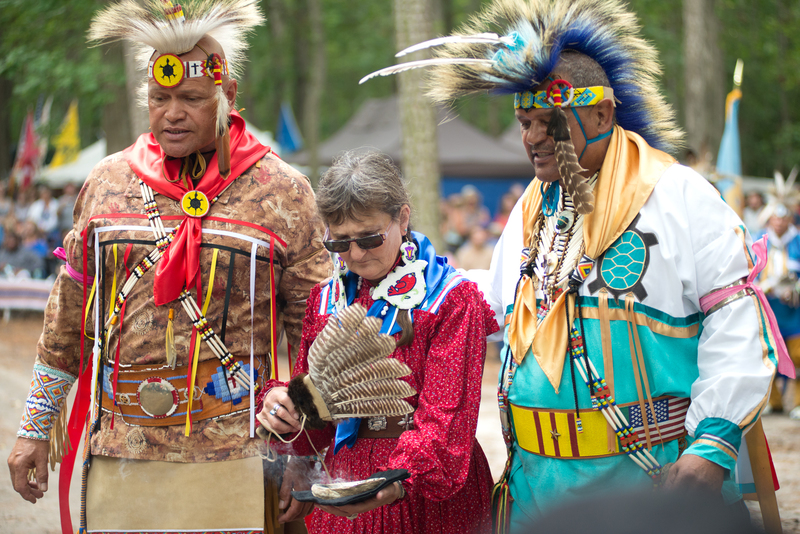
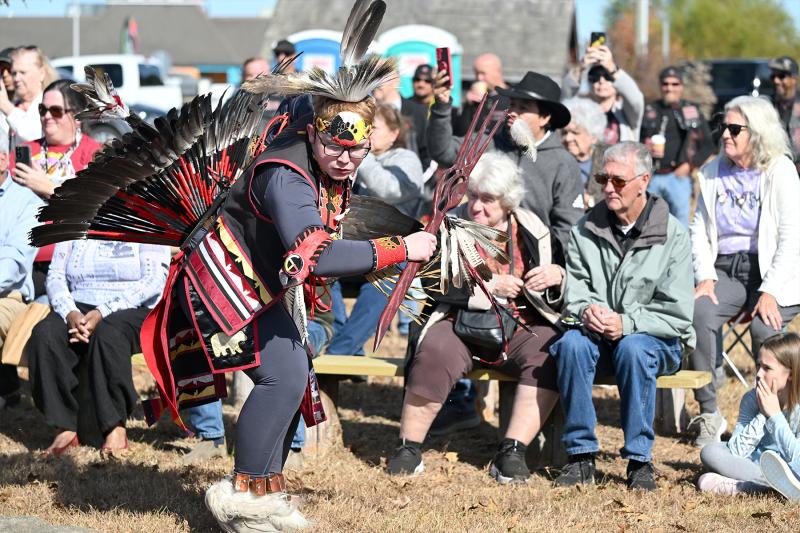




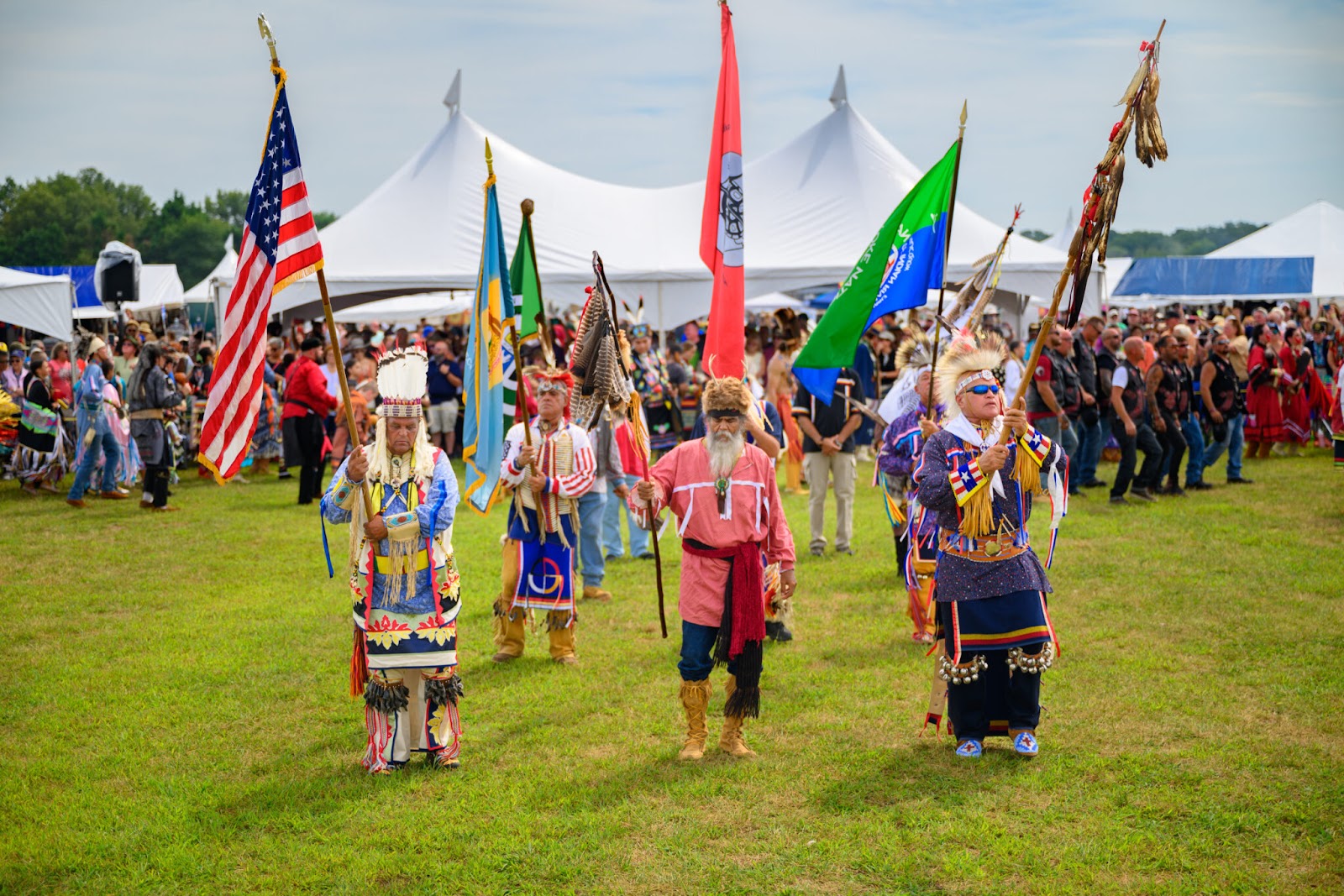


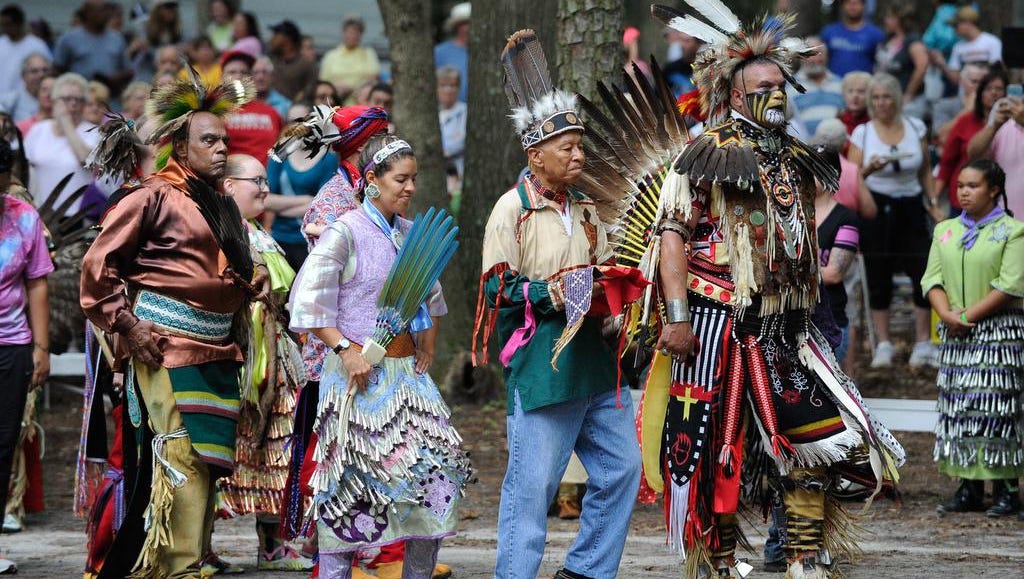



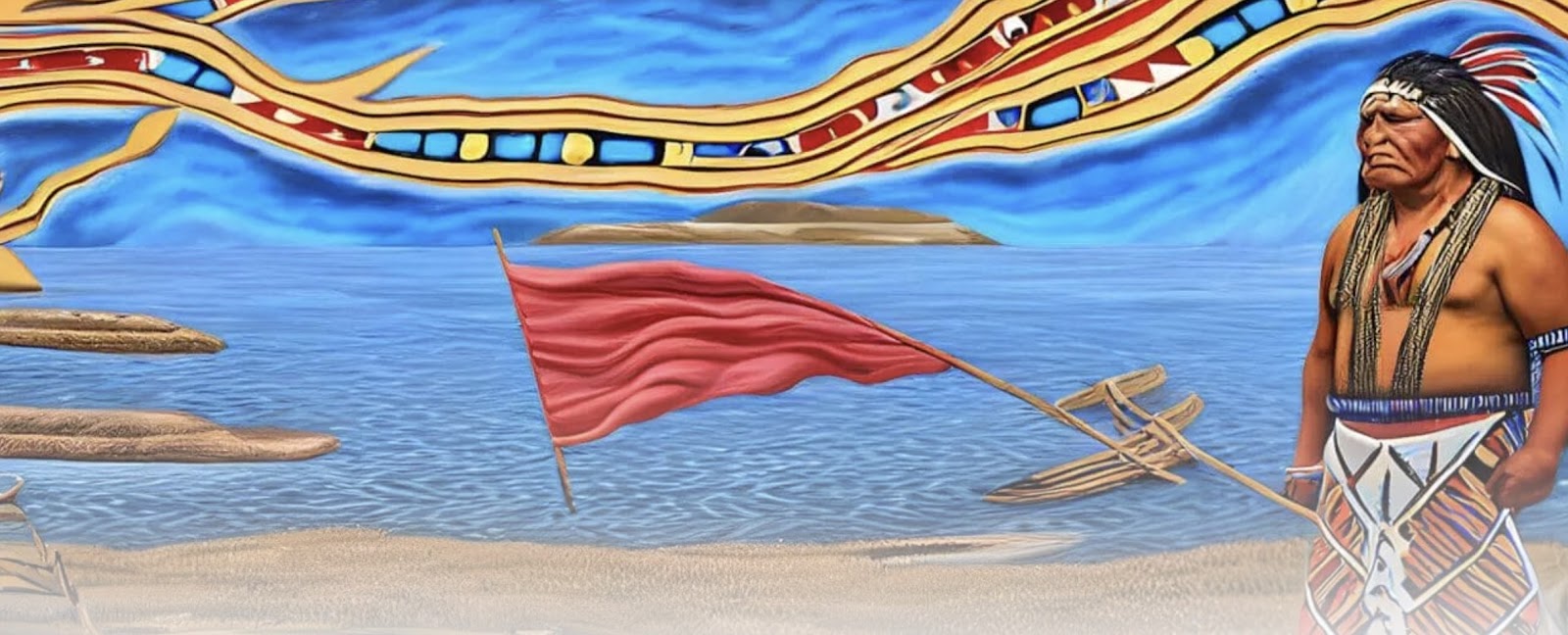





Comments
Post a Comment